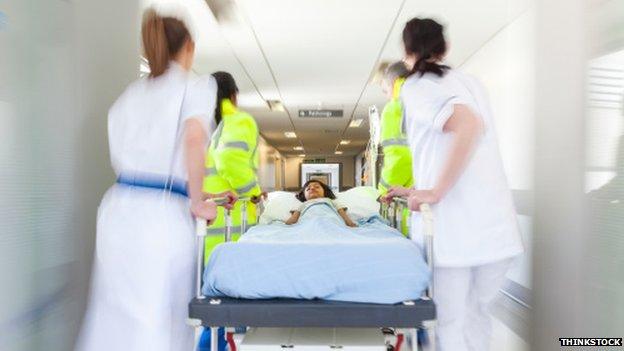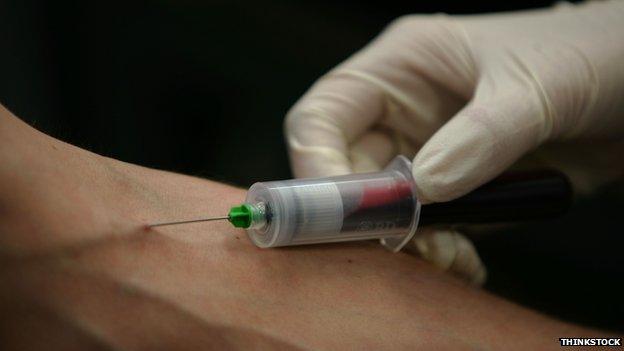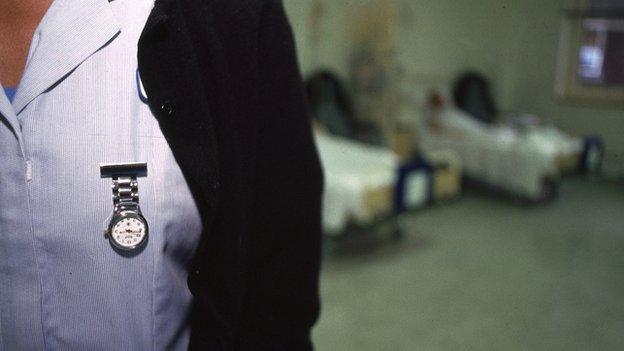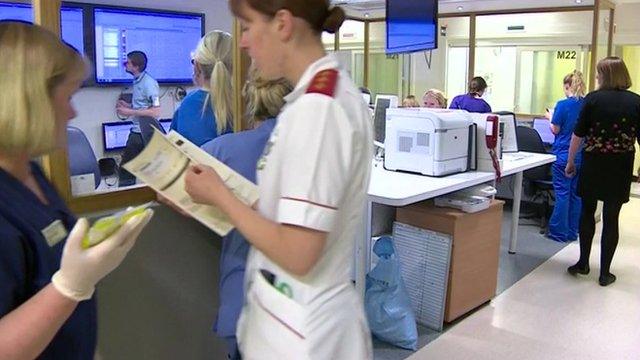Less NHS waste: Is Lord Carter's report a case of deja vu?
- Published

"A radical new blueprint for how our NHS buys everything - from rubber gloves and stitches to new hips, building work, bed pans and temporary staff - has been unveiled today..."
If that sounds familiar, that's because it is from the opening paragraph of a Department of Health press release in August 2013.
And here are some words from this morning's release from the department following the publication of the report by Lord Carter, external: "The report, published today, finds that the NHS can make better use of staff, using medicines more effectively and getting far better value from the huge number of products the NHS buys."
It's easy to be cynical, and some have been, after the details of Lord Carter's report emerged. Calls for greater efficiency in the NHS are hardly new.
Sir David Nicholson, former head of NHS England, back in 2009 said £20bn of annual savings had to be made by hospitals and other trusts.
That target was largely met by 2015, although keeping a tight rein on health service pay was a major contributor and there has not been a detailed audit.
Does anyone remember the Gershon Review? That was back in 2004-05 under the Blair government when Sir Peter Gershon, a former business chief, was given the job of shining a light on waste across Whitehall and government.
He found billions of pounds of efficiency savings which were reportedly achieved over the next couple of years.
'Holy grail'
While welcoming Lord Carter's main recommendations, Nigel Edwards of the Nuffield Trust, is mindful of these previous announcements on cutting waste and the danger that expectations are not met. "This has been a long-standing issue in the NHS. Spending public money better has been the holy grail of public sector spending reductions over the past 20 years.
"Diagnosing the problem is the easy bit. Getting solutions to stick is much, much harder," he says.


Report recommendations:
better management of staff, rotas and shifts
improving the management of annual leave and sickness absence
optimising the medicines used in hospitals
cutting the number of product lines of everyday consumables that the NHS uses from more than 500,000 to fewer than 10,000 and being better at procurement

Lord Carter has delved deeper than previous analyses which have covered differences in prices paid by hospitals for items like syringes and surgical gloves.

He identified control of staff costs as a central issue, amounting to 63% of total spending by hospitals, arguing that "unless workforce management and productivity are addressed, all other areas of opportunity pale into insignificance".
The report finds significant variations in the way staff rotas are organised and even the fact that one trust could save £10,500 per month simply by cutting excessive demands for leave by employees.
Next steps
There is more to come from Lord Carter. In the autumn, he will publish details of a tool which will allow comparisons between overall productivity and efficiency at different hospitals.
There will also be a description of a "model hospital" covering best practice in cost control in areas like operating theatres and A&E.
Lord Carter: "We have not used the buying power that we've got nationally, effectively"
The reality is that as demand for care continues to rise with a growing and ageing population and the NHS budget does not increase in line with that, there will be a continued demand for more efficiency.
Whatever Gershon and Nicholson said, Carter is the latest chapter in the health service's endless quest to make the best use of its resources.
- Published11 June 2015

- Published31 May 2015

- Published22 May 2015
